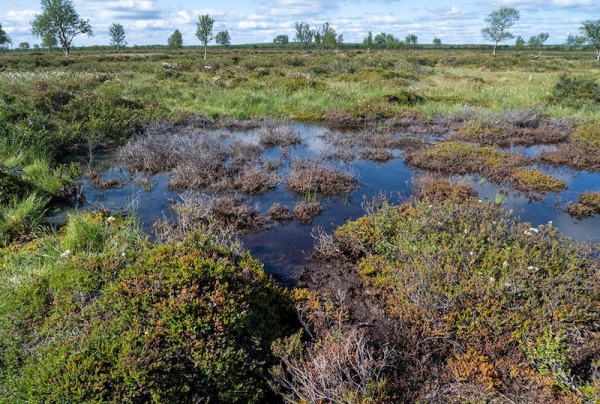Northern nature changing rapidly and irreversibly

Thawed palsas mound in Inari 2023.
- Next Article Domestic violence persists in Finland: Helping perpetrators could be the solution
A recent temperature analysis focused on the Lapland regions of Norway, Sweden, and Finland has revealed that, with current climate measures in place, Lapland could warm by 2–3 degrees from the present state within the next 50 years, equating to 4–5 degrees compared to pre-industrial times.
This increase in temperature is set to have significant and far-reaching impacts on the region’s nature and livelihoods.
Changes will be observed in various ecosystems as permafrost thaws, palsa mires disappear, and mountain birch forests in many areas transform into secondary fell heaths and pine forests. Arctic nature will green as open areas become bushy and grassy. Northern animal species will face further endangerment, and some may even face extinction. Currently, nearly 40 percent of the species inhabiting open fells are already classified as endangered.
The plight of these species is compounded by the darkening and eutrophication of waters, as well as the spread of invasive and alien species like foxes, Arctic char, and giant hogweed in the region. Winters in Lapland will start later and become milder, which will pose challenges to several livelihoods, including reindeer herding, nature tourism, and construction.
These changes are projected to occur within a single human generation. The temperature in the area will rise by 4–5 degrees with current climate measures.
The Finnish Environment Institute coordinated the analysis that provided insights into the warming of Tunturi-Lapland. Compared to pre-industrial times, Tunturi-Lapland has already warmed by approximately two degrees. Even if most countries reasonably follow the emission reduction targets of the Paris Agreement, the temperature in Tunturi-Lapland will increase by an additional 2–3 degrees over the next 50 years. This warming forecast is based on the assumption that countries will implement their promised emission reduction commitments without further tightening.
However, if greenhouse gas emissions are left unchecked, temperatures in Lapland could rise by almost 7 degrees compared to pre-industrial times. It is possible to limit the temperature increase to 3–4 degrees if all countries globally implement new, stringent, and comprehensive restrictions on energy production, transportation, construction, food production, and consumption.
The knowledge of climate change impacts has been compiled into a single location.
The analysis was conducted in preparation for the “Through the Eyes of the Fell Hawk” virtual photo exhibition, which comprehensively showcases the impacts of climate change on Northern Norway, Sweden, and Finland’s Lapland regions. The exhibition combines striking photographic art with scientific knowledge to illustrate how climate change affects the northern area’s nature, livelihoods, and the lives of local people. The exhibition can also be used as an educational re scheduled for October 20, 2023.
HT
- Next Article Domestic violence persists in Finland: Helping perpetrators could be the solution
Source: www.helsinkitimes.fi
